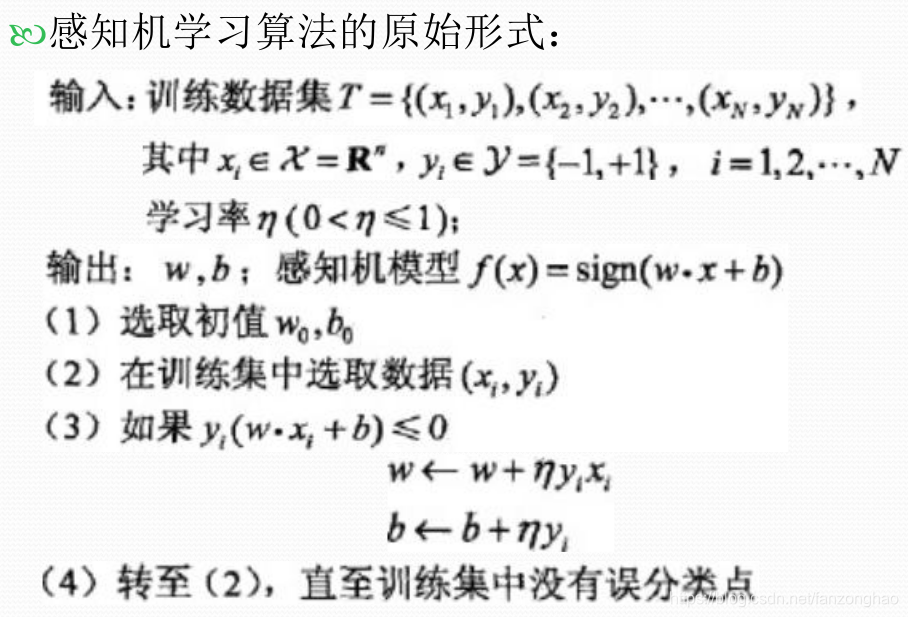

查看数据集
import pandas as pd
import numpy as np
from sklearn.datasets import load_iris
import matplotlib.pyplot as plt
# load data
iris = load_iris()
df = pd.DataFrame(iris.data, columns=iris.feature_names)
df['label'] = iris.target
df.columns = ['sepal length', 'sepal width', 'petal length', 'petal width', 'label']
print(df.label.value_counts())
plt.scatter(df[:50]['sepal length'], df[:50]['sepal width'], label='one')
plt.scatter(df[50:100]['sepal length'], df[50:100]['sepal width'], label='two')
plt.xlabel('sepal length')
plt.ylabel('sepal width')
plt.legend()
plt.show()sepal length (cm) sepal width (cm) petal length (cm) petal width (cm)
发现四个维度的数据,有两个维度就可以线性可分.

import pandas as pd
import numpy as np
from sklearn.datasets import load_iris
import matplotlib.pyplot as plt
# load data
iris = load_iris()
df = pd.DataFrame(iris.data, columns=iris.feature_names)
df['label'] = iris.target
# df.columns = ['sepal length', 'sepal width', 'petal length', 'petal width', 'label']
# print(df.label.value_counts())
#
# plt.scatter(df[:50]['sepal length'], df[:50]['sepal width'], label='one')
# plt.scatter(df[50:100]['sepal length'], df[50:100]['sepal width'], label='two')
# plt.xlabel('sepal length')
# plt.ylabel('sepal width')
# plt.legend()
# plt.show()
data = np.array(df.iloc[:100, [0,1,-1]])
print(data)
X, y = data[:,:-1], data[:,-1]
print(type(X))
y = np.array([1 if i == 1 else -1 for i in y])
# 数据线性可分,二分类数据
# 此处为一元一次线性方程
class Model:
def __init__(self):
self.w = np.ones(len(data[0]) - 1, dtype=np.float32)
print('self.w',self.w)
self.b = 0
self.l_rate = 0.1
# self.data = data
def sign(self, x, w, b):
y = np.dot(x, w) + b
return y
# 随机梯度下降法
def fit(self, X_train, y_train):
is_wrong = False
while not is_wrong:
wrong_count = 0
for d in range(len(X_train)):
X = X_train[d]
y = y_train[d]
if y * self.sign(X, self.w, self.b) <= 0:
self.w = self.w + self.l_rate * np.dot(y, X)
self.b = self.b + self.l_rate * y
wrong_count += 1
if wrong_count == 0:
is_wrong = True
return 'Perceptron Model!'
def score(self):
pass
perceptron = Model()
perceptron.fit(X, y)
x_points = np.linspace(4, 7,10)
print('x_points=',x_points)
y_ = -(perceptron.w[0]*x_points + perceptron.b)/perceptron.w[1]
plt.plot(x_points, y_)
plt.plot(data[:50, 0], data[:50, 1], 'bo', color='blue', label='one')
plt.plot(data[50:100, 0], data[50:100, 1], 'bo', color='orange', label='two')
plt.xlabel('sepal length')
plt.ylabel('sepal width')
plt.legend()
plt.show()